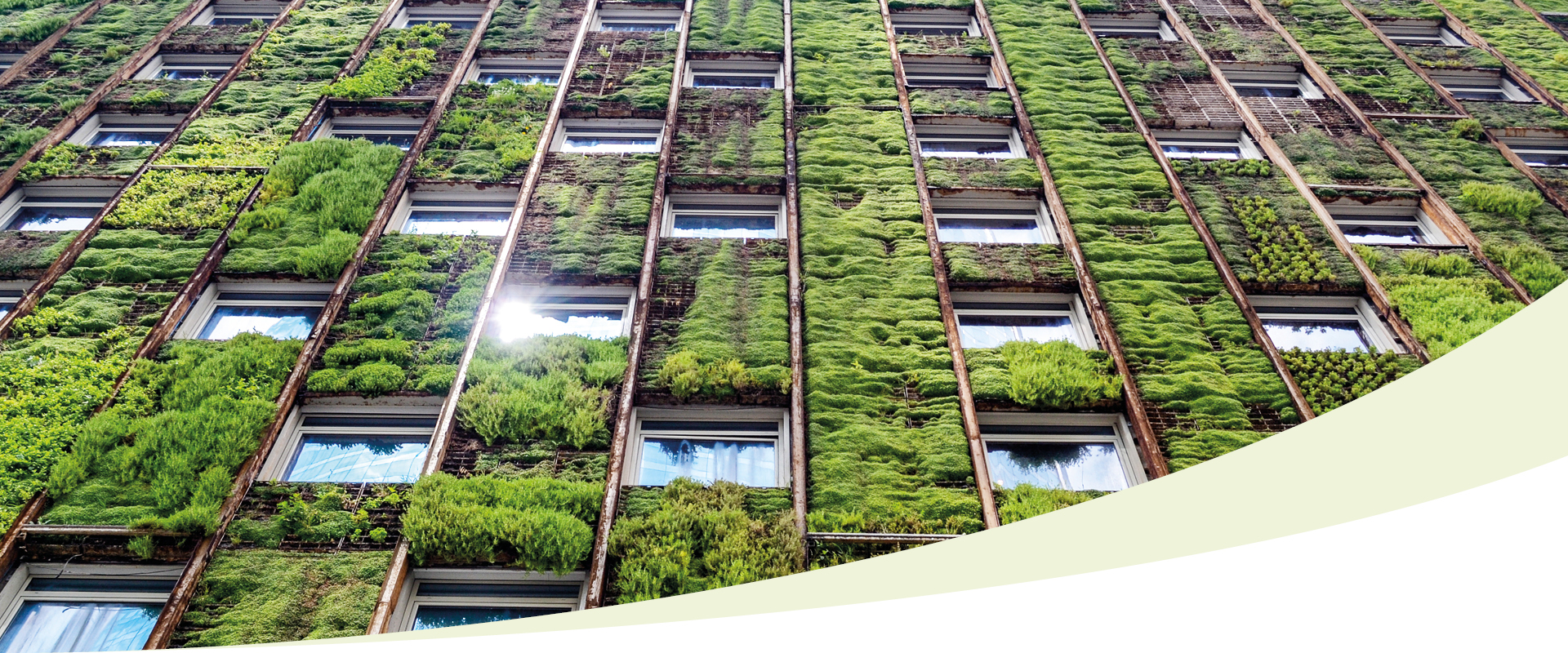
Climate-conscious living
Measures and products that help you live in a climate-neutral way.
You don't have to build a clay house from a 3D printer, as the architect Mario Cucinella has done. Or wait for the breakthrough of the American research team that wants to solve all our energy problems with nuclear fusion. But the fact that CO2 emissions from the construction and building industry worldwide are three times higher than those from all air traffic gives many of us pause for thought. Sustainable strategies are needed more than ever. Renewable raw materials are experiencing a new heyday. We can no longer do without photovoltaics - new, smart solutions are being developed here too: solar power from the balcony directly into the socket is one of the many examples that can be implemented quickly, make you independent of electricity providers and immediately reduce your carbon footprint.

Creativity and rethinking are needed more than ever when it comes to designing sustainable living spaces. Minimalism, i.e. consciously doing without in order to create space for the essentials, is one of the many strategies. Tiny houses are another. The Re-Loved Revolution living trend is also on the rise.
Recycling is the trend, furniture is being given a second, third or fourth life. Some solutions are just a few simple steps away: special washbasin and shower fittings, for example, limit the flow of water and thus save valuable drinking water. Sustainable living is about thinking ahead. On a large and small scale.
How can we live in a more climate-conscious way?
Even on a small scale, everyone can make a valuable contribution within their own four walls without compromising on quality and modern design. Remarkable results can be achieved with a wide variety of measures.
Alternative energy generation
Individual power generation
Climate-conscious garden
Water-saving solutions
Building materials of the future
Re-loved revolution
Alternative energy generation
Individual power generation
Climate-conscious garden
Water-saving solutions
Building materials of the future
Re-loved revolution
Sustainable strategies that follow the cradle-to-cradle principle are more in demand than ever. Renewable raw materials are experiencing a new heyday. We can no longer do without photovoltaics, and new, smart solutions are being developed here too.
People who live smart are using new technologies for themselves: there is a house that generates more energy than it consumes. The battery in an electric car can be used as a flexible storage unit - it's possible. The better we manage the electricity we generate ourselves, the smaller our CO2 footprint will be. This is exactly why we need new ideas.
Creativity and rethinking are needed more than ever when it comes to designing sustainable living spaces. Minimalism, i.e. consciously doing without in order to create space for the essentials, is one of the many strategies.
Sustainable living is about thinking ahead. There is plenty of room here for innovators, planners and implementers.
Don'ts
Unsustainable building
This means building without consideration for environmental, social and economic aspects. They do not meet the requirements of environmental friendliness, social responsibility and economic viability and may, for example, waste energy and resources, have a negative impact on the environment and the health of residents and offer a poor quality of life. It can also mean that the buildings are not designed for future requirements and quickly become obsolete.
Another example of an unsustainable building would be one in which energy is wasted, for example through uninsulated windows or inefficient heating. This leads to high energy costs and contributes to climate change. Without sufficient insulation measures, such as uninsulated windows, it can also lead to unpleasant draughts and discomfort inside the building. A sustainable building, on the other hand, would use energy efficiency measures such as insulated windows and roof, as well as renewable energy, thus reducing energy costs and minimizing environmental impact.
Outdated heating systems
Heating with gas and electricity can be unsustainable depending on the type of energy generation and technology. When gas and electricity are generated from fossil fuels such as coal and oil, heating the building can make a significant contribution to climate change. Not only does it produce greenhouse gases, but it also causes air pollution and negative health effects. A sustainable alternative would be to use renewable energies such as solar energy or heat pumps.
Dos
Sustainable construction
In new buildings, care can be taken to ensure that environmentally friendly, low-emission building materials are used and that the house is designed to be as energy-efficient as possible through new construction concepts. Smart building technology is essential here. The size of the house is also crucial: while conventional houses are built to a fixed size, the houses of the future can be extended or reduced in size on a modular basis to suit individual requirements.
Free radiators for efficient heating
Furniture or curtains should never be placed in front of a radiator. A minimum distance of 30 cm is recommended. Barriers impede the flow of heat and can drive up heating costs.
Effective shock ventilation for fresh air
Ventilate for a few minutes several times a day by opening the window wide and then closing it again. It is particularly effective to open opposite windows to maximize air exchange.
Avoid waste
Avoiding waste and disposing of it correctly can help to reduce the amount of pollutants released into the environment. The motto is to reuse or lend old items.
Clean water
Filter systems or treatment plants ensure better water quality. A water filter can help to significantly improve the quality of tap water in the home. By avoiding chemical pesticides and fertilizers in the garden, you can help reduce the amount of pollutants entering the water.
Info & Contact
23-26 January 2025
MARX HALLE Vienna
info@meineklimazukunft.com
© 2024
